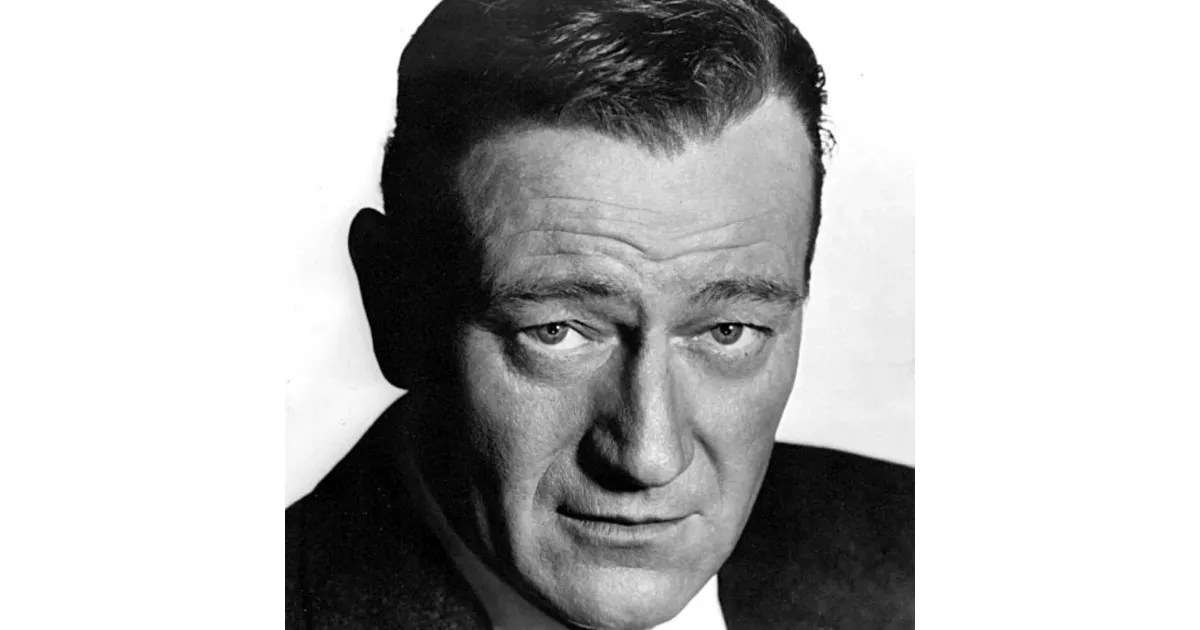Discover the career path of John Wayne, from the first major opportunity to industry-changing achievements.
John Wayne, born Marion Robert Morrison and nicknamed "Duke," was a highly popular American actor. He rose to fame during Hollywood's Golden Age, primarily starring in Westerns and war movies. Wayne's career spanned from the silent era through the New Wave, with a total of 179 film and television appearances. He remained a top box-office draw for three decades, acting alongside many prominent stars. The American Film Institute recognized his significant contributions by naming him among the greatest male stars of classic American cinema.
1926: Minor Role in Bardelys the Magnificent and Brown of Harvard
In 1926, John Wayne had a minor, uncredited role in the film "Bardelys the Magnificent" and also appeared in "Brown of Harvard" playing football with his USC teammates.
1926: Early film career
Starting in 1926, John Wayne began his film career, appearing in over 170 films by 1977.
1927: Appearance in The Dropkick
In 1927, John Wayne appeared with his USC teammates playing football in "The Dropkick".
1929: Appearance in Salute and Words and Music
In 1929, John Wayne appeared with his USC teammates playing football in "Salute" and also appeared in "Words and Music", where he was credited as "Duke Morrison".
1930: B-Movie Westerns
From 1930 to 1939, John Wayne appeared in approximately 80 low-budget Poverty Row Westerns.
1930: First Leading Role in The Big Trail
In 1930, John Wayne got his first leading role in Raoul Walsh's Western "The Big Trail", an early widescreen film epic that turned out to be a box-office failure.
1930: The Big Trail and Maker of Men
In 1930, John Wayne was cast in his first starring role in "The Big Trail". In 1930, John Wayne filmed "Maker of Men", released in 1931.
1931: Release of Maker of Men
In 1931, John Wayne's film "Maker of Men", which was filmed in 1930, was released.
1931: Role in The Deceiver
In 1931, after the commercial failure of "The Big Trail", Wayne played a small role in "The Deceiver", where he played a corpse.
1933: Lead Role in The Three Musketeers and Singing Cowboy in Riders of Destiny
In 1933, Wayne played the lead role in "The Three Musketeers" and became one of the first singing cowboys of film in "Riders of Destiny", albeit via dubbing.
1936: Voting for Roosevelt
In 1936, John Wayne voted for Democratic President Franklin D. Roosevelt in the presidential election.
1936: Motion Picture Herald Top Ten Money-Making Western Stars poll
In 1936, John Wayne was listed in the Motion Picture Herald Top Ten Money-Making Western Stars poll.
1939: B-Movie Westerns
From 1930 to 1939, John Wayne appeared in approximately 80 low-budget Poverty Row Westerns.
1939: Stagecoach Breakthrough
In 1939, John Ford's "Stagecoach" was released and made Wayne a mainstream star, marking a significant turning point in his career.
1939: Stagecoach Release and Success
In 1939, John Ford's "Stagecoach" was released, becoming a critical and financial success and marking Wayne's breakthrough into mainstream stardom.
1939: Motion Picture Herald and Box Office poll listings
In 1939, John Wayne was listed in the Motion Picture Herald Top Ten Money-Making Western Stars poll, and also appeared in the similar Box Office poll.
1940: Box Office poll appearance
In 1940, John Wayne appeared in the Box Office poll.
1941: First Color Film
In 1941, John Wayne's first color film, "The Shepherd of the Hills", was released.
1942: Starred in Radio Series Three Sheets to the Wind
For six months in 1942, John Wayne starred in his own radio adventure series, "Three Sheets to the Wind", as Dan O'Brien, a detective.
1942: Flying Tigers Release
In 1942, John Wayne portrayed an aviator in the film 'Flying Tigers'.
1942: Reap the Wild Wind
In 1942, John Wayne starred in "Reap the Wild Wind", his only film directed by Cecil B. DeMille, portraying a character with questionable values.
1943: Toured U.S. Bases in South Pacific
In 1943, John Wayne toured U.S. bases and hospitals in the South Pacific with the United Service Organizations (USO).
February 1944: Creating Motion Picture Alliance
In February 1944, John Wayne took part in creating the conservative Motion Picture Alliance for the Preservation of American Ideals.
1944: Toured U.S. Bases in South Pacific
In 1944, John Wayne toured U.S. bases and hospitals in the South Pacific with the United Service Organizations (USO).
1948: Role in Red River
In 1948, John Wayne played a cattleman driving his herd on the Chisholm Trail in the film "Red River".
1948: Supporting Dewey
In 1948, John Wayne supported Republican candidate Thomas E. Dewey in the presidential election, despite admiring Democratic President Harry S. Truman.
1949: She Wore a Yellow Ribbon Release
In 1949, John Wayne appeared in John Ford's film 'She Wore a Yellow Ribbon'.
1949: Top Ten Money Makers Poll
In 1949, John Wayne appeared in the Top Ten Money Makers Poll of all films.
1949: Turned Down All the King's Men and Sands of Iwo Jima Nomination
In 1949, John Wayne refused the starring role in "All the King's Men" and was nominated for an Oscar for "Sands of Iwo Jima".
1949: Elected President of Motion Picture Alliance
In 1949, John Wayne was elected as the president of the Motion Picture Alliance for the Preservation of American Ideals.
1949: Release of Sands of Iwo Jima
In 1949, four years after World War II, Sands of Iwo Jima was released, contributing to John Wayne's image as a movie war hero.
1950: Lost Role in The Gunfighter
In 1950, John Wayne lost the leading role of Jimmy Ringo in "The Gunfighter" due to his refusal to work for Columbia Pictures, because its chief had mistreated him.
1950: First place in Top Ten Money Makers Poll
In 1950, John Wayne took first place in the Top Ten Money Makers Poll of all films.
1951: Flying Leathernecks Release
In 1951, John Wayne portrayed an aviator in the film 'Flying Leathernecks'.
1951: First place in Top Ten Money Makers Poll
In 1951, John Wayne took first place in the Top Ten Money Makers Poll of all films.
1952: The Quiet Man Release
In 1952, John Wayne appeared in John Ford's film 'The Quiet Man'.
1952: Batjac Production Company Co-Founded
In 1952, John Wayne co-founded Batjac, a production company named after the fictional shipping company Batjak in 'Wake of the Red Witch', which produced many films for himself and other stars.
1952: Role in The Quiet Man
In 1952, John Wayne starred in "The Quiet Man" alongside Maureen O'Hara.
1953: Island in the Sky Release
In 1953, John Wayne portrayed an aviator in the film 'Island in the Sky'.
1954: The High and the Mighty Release
In 1954, John Wayne starred in 'The High and the Mighty', directed by William Wellman, where he played a heroic copilot, earning him widespread acclaim.
1954: First place in Top Ten Money Makers Poll
In 1954, John Wayne took first place in the Top Ten Money Makers Poll of all films.
1956: Seven Men From Now and Gun the Man Down Production
In 1956, Batjac produced 'Seven Men From Now,' marking the start of the Boetticher-Scott collaboration, and 'Gun the Man Down' with James Arness.
1956: The Conqueror Release
In 1956, John Wayne portrayed Genghis Khan in 'The Conqueror', a performance that was poorly received by critics.
1956: Role in The Searchers
In 1956, John Wayne starred in "The Searchers" as a Civil War veteran whose niece is abducted by a tribe of Comanches.
1957: Top Ten Money Makers Poll appearance
From 1949 to 1957, John Wayne consistently appeared in the Top Ten Money Makers Poll of all films.
1957: Confronting Kirk Douglas
In 1957, John Wayne confronted Kirk Douglas about his decision to play the role of Vincent van Gogh in the film Lust for Life, criticizing the portrayal of weak characters.
1957: The Wings of Eagles and Jet Pilot Release
In 1957, John Wayne portrayed aviators in both 'The Wings of Eagles' and 'Jet Pilot'.
May 14, 1958: I Married a Woman Los Angeles Opening
On May 14, 1958, Hal Kanter's 'I Married a Woman', starring George Gobel and Diana Dors, premiered in Los Angeles, featuring a cameo appearance by John Wayne as himself.
1958: Top Ten Money Makers Poll appearance
From 1958 to 1974, John Wayne consistently appeared in the Top Ten Money Makers Poll of all films.
March 18, 1959: Rio Bravo Premiere
On March 18, 1959, Howard Hawks's 'Rio Bravo' premiered, starring John Wayne in the lead role alongside Dean Martin, Ricky Nelson, Angie Dickinson, Walter Brennan and Ward Bond.
1960: The Alamo Directorial Debut
In 1960, John Wayne directed and produced 'The Alamo', making his directorial debut, and portrayed Davy Crockett. He also starred in Henry Hathaway's 'North to Alaska' that year.
1960: Supporting Nixon and Joining John Birch Society
In 1960, John Wayne supported Vice President Richard Nixon in the presidential election. He also joined the anti-communist John Birch Society, but later quit.
1961: The Comancheros Release
In 1961, John Wayne shared the lead role with Stuart Whitman in Michael Curtiz's film, 'The Comancheros'.
1962: Role in The Man Who Shot Liberty Valance and The Longest Day
In 1962, John Wayne starred in "The Man Who Shot Liberty Valance" as a troubled rancher competing with a lawyer for a woman's hand and also starred in "The Longest Day".
1962: The Man Who Shot Liberty Valance and Hatari! Premiere
In 1962, John Wayne starred in John Ford's 'The Man Who Shot Liberty Valance' with James Stewart. Also, on May 29, the movie 'Hatari!' premiered where Wayne played the lead capturing wild animals from the beds of trucks.
1963: How the West Was Won and Donovan's Reef releases
In 1963, John Wayne acted in a segment of 'How the West Was Won', directed by Ford. On June 12, he starred in his final Ford film, 'Donovan's Reef', and on November 13, 'McLintock!' premiered, again opposite Maureen O'Hara.
1964: Circus World Release
In 1964, John Wayne starred in Henry Hathaway's 'Circus World' with Claudia Cardinale and Rita Hayworth.
1964: Supporting Barry Goldwater
In 1964, John Wayne was a staunch supporter of Barry Goldwater, and actively campaigned for him.
1965: The Greatest Story Ever Told, In Harm's Way, and The Sons of Katie Elder Releases
In 1965, John Wayne had a cameo in 'The Greatest Story Ever Told'. On April 6, he starred in 'In Harm's Way', and on June 13, he acted in 'The Sons of Katie Elder'.
1966: Cast a Giant Shadow Cameo
In 1966, John Wayne made a cameo appearance in Melville Shavelson's 'Cast a Giant Shadow' starring Douglas.
1966: Supporting Ronald Reagan
In 1966, John Wayne supported his friend Ronald Reagan's campaigns for Governor of California.
1967: The War Wagon and El Dorado Premiere
In 1967, John Wayne starred in Burt Kennedy's 'The War Wagon' and Howard Hawks' 'El Dorado', which premiered on June 7. 'El Dorado' was a remake of 'Rio Bravo'.
1968: Declining Run for National Office
In 1968, John Wayne declined offers to run for national office, and he also rejected being George Wallace's running mate, instead supporting Nixon and addressing the Republican National Convention.
June 13, 1969: True Grit Premiere
On June 13, 1969, Henry Hathaway's 'True Grit' premiered. For his role as Rooster Cogburn in this film, John Wayne later won the Best Actor Oscar.
1969: Academy Award for True Grit
In 1969, John Wayne received the Academy Award for Best Actor for his role as a cantankerous one-eyed marshal in "True Grit".
1969: Interview with Roger Ebert
In 1969, during an interview with Roger Ebert, John Wayne addressed criticisms about playing the same type of character, defending his range of roles and the need to incorporate personal character into his star persona.
June 24, 1970: Chisum Release
On June 24, 1970, Andrew V. McLaglen's 'Chisum' was released, starring John Wayne as a cattle ranch owner.
1970: Supporting Ronald Reagan's campaign
In 1970, John Wayne supported his friend Ronald Reagan's campaigns for Governor of California.
June 1971: Big Jake Debut
In June 1971, George Sherman's 'Big Jake' debuted, starring John Wayne as an estranged father tracking down his kidnapped grandson's gang. The film was a critically acclaimed hit.
1971: First place in Top Ten Money Makers Poll
In 1971, John Wayne took first place in the Top Ten Money Makers Poll of all films.
1971: Opposing Nixon's Trip to China
In 1971, John Wayne wrote to President Nixon to oppose Nixon's planned trip to China.
1972: The Cowboys Release
In 1972, John Wayne starred in Mark Rydell's 'The Cowboys', where he was noted for his "marvelously indestructible" presence. The same year, he was drafted in the NFL by the Atlanta Falcons, a pick disallowed due to his age.
February 7, 1973: The Train Robbers Opened
On February 7, 1973, Burt Kennedy's 'The Train Robbers' opened, starring John Wayne alongside Ann-Margret, Rod Taylor and Ben Johnson.
1973: Harvard Lampoon Invitation
In 1973, The Harvard Lampoon invited John Wayne to receive The Brass Balls Award, created in his "honor" after calling him "the biggest fraud in history".
1973: Marlon Brando's Oscar Refusal
In 1973, during Marlon Brando's Oscar refusal speech, John Wayne was allegedly angry about Sacheen Littlefeather's presence.
January 15, 1974: Receipt of The Brass Balls Award
On January 15, 1974, John Wayne received The Brass Balls Award from The Harvard Lampoon, despite protests, celebrating his "outstanding machismo".
1974: Top Ten Money Makers Poll appearance
From 1958 to 1974, John Wayne consistently appeared in the Top Ten Money Makers Poll of all films.
1974: McQ Release
In 1974, John Wayne starred as the detective in John Sturges's crime drama 'McQ'.
1974: Charles Champlin's Observations
In 1974, film critic Charles Champlin wrote about John Wayne, describing him as a motion picture actor who defined what that means.
March 25, 1975: Brannigan Premiere
On March 25, 1975, Douglas Hickox's 'Brannigan' premiered, featuring John Wayne as a Chicago police lieutenant in London.
1976: Starring Role in The Shootist
In 1976, John Wayne starred in "The Shootist" as an aging gunfighter suffering from cancer, which was his final screen performance.
1976: The Shootist Release
In 1976, John Wayne starred in Don Siegel's 'The Shootist', his final cinematic role, where he played a character dying of cancer, mirroring his own health struggles.
1977: Extensive filmography
Between 1926 and 1977, John Wayne appeared in over 170 films.
1977: Attending Carter's Inaugural Ball
In 1977, John Wayne attended President Jimmy Carter's inaugural ball as a member of the 'loyal opposition'.
1985: John Wayne Cancer Foundation Founded
In 1985, the John Wayne Cancer Foundation was founded in honor of John Wayne, with the mission to "bring courage, strength, and grit to the fight against cancer".
2005: Top money maker
According to Quigley Polling, as of 2005, Wayne was named the top money maker.
2006: Inauguration of "Louie and the Duke Classics"
In 2006, the "Louie and the Duke Classics" events were inaugurated to benefit the John Wayne Cancer Foundation and the American Cancer Society.
2012: Exhibit Creation
In 2012 an exhibit was created at the University of Southern California dedicated to John Wayne's role in the history of cinema.
2022: Investigation on Oscar event
In 2022, an investigation found that it was unlikely that John Wayne was going to forcibly remove Sacheen Littlefeather from the stage during Marlon Brando's 1973 Oscar refusal.
Mentioned in this timeline
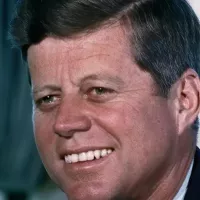
John F Kennedy JFK was the th U S President...
California is a U S state on the Pacific Coast...
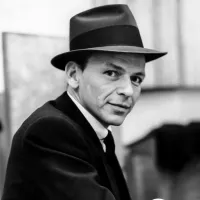
Frank Sinatra nicknamed Chairman of the Board and Ol' Blue...
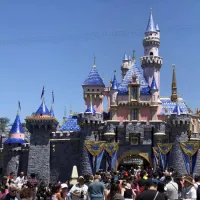
Disneyland located in Anaheim California is the first theme park...
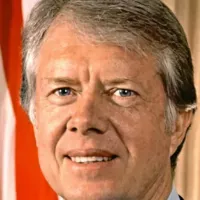
Jimmy Carter the th U S President - was a...
China officially the People's Republic of China PRC is an...
Trending
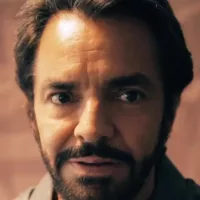
Eugenio Derbez is a highly successful Mexican actor and comedian renowned for his work in both Spanish and English language...

2 months ago Angela Bassett As Queen Ramonda Stuns At Vogue World 2025; Black Panther Tribute.

8 months ago Tesla Board Initiated CEO Search to Replace Elon Musk Amidst Leadership Concerns.

9 months ago Milo Manheim and Liz Gillies bond in Little Shop of Horrors, extend run.
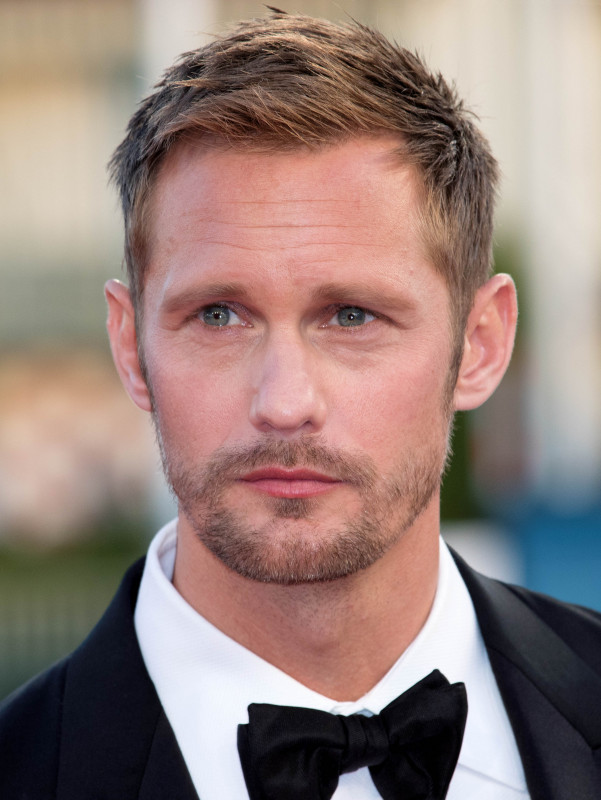
1 month ago Alexander Skarsgård reminds Miriam Margolyes of their meeting; addresses sexuality question, states 'not really' gay.
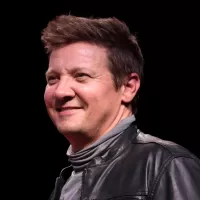
2 months ago Jeremy Renner faces accusations of ICE threat and misconduct controversy in Hollywood.
Popular

Stranger Things created by the Duffer Brothers is a popular...

XXXTentacion born Jahseh Dwayne Ricardo Onfroy was a controversial yet...

Kelsey Grammer is an accomplished American actor producer and singer...

Candace Owens is an American conservative political commentator and author...

Bernie Sanders is a prominent American politician currently serving as...

Melania Trump a Slovenian-American former model has served as First...
